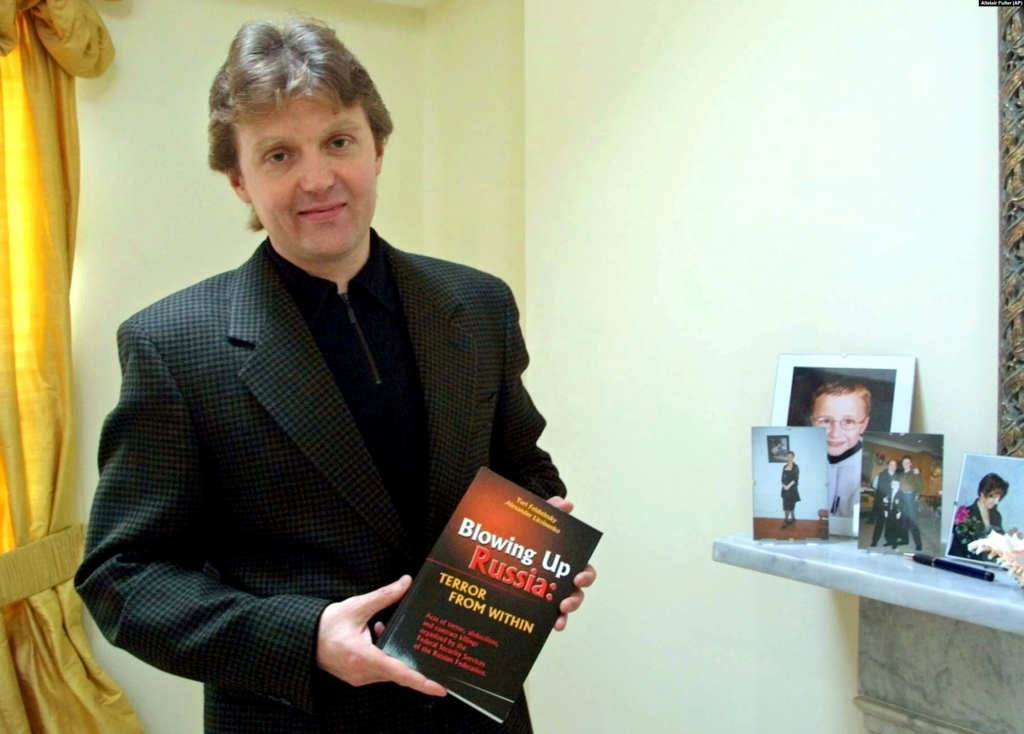In the summer of 1999 Moscow was full of grim rumours about sinister plots how Yeltsin could force his way to remain in power. His popularity was 2% in the Russian population and he could not hope to win the presidential election which were planned for the summer of 2000. Neither would any candidate, endorsed by Yeltsin have a chance to win the election. Yeltsin assigned Putin his prime minister and Putin also had an approval rating of 2% – he was an unknown person in August 1999. That would change in drastic terms in the next three months. This rise was accompliched by striking fear into the hearts of the Russian population.
In September 1999, a series of explosions hit four apartment blocks in the Russian cities of Buynaksk, Moscow, and Volgodonsk, killing more than 300, injuring more than 1,000, and spreading a wave of fear across the country. The bombings, together with the Invasion of Dagestan, triggered the Second Chechen War.
The handling of the crisis by Vladimir Putin, who was prime minister at the time, boosted his popularity greatly and helped him attain the presidency within a few months.
The blasts hit Buynaksk on 4 September and Moscow on 9 and 13 September.

On 13 September, Russian Duma speaker Gennadiy Seleznyov made an announcement in the Duma about receiving a report that another bombing had just happened in the city of Volgodonsk. A bombing did happen in Volgodonsk—but only three days later—on 16 September.
Chechen militants were blamed for the bombings, but denied responsibility, along with Chechen president Aslan Maskhadov.
A suspicious device resembling those used in the bombings was found and defused in an apartment block in the Russian city of Ryazan on 22 September.
On 23 September, Vladimir Putin praised the vigilance of the inhabitants of Ryazan and ordered the air bombing of Grozny, which marked the beginning of the Second Chechen War.
Three FSB agents who had planted the devices at Ryazan were arrested by the local police. The next day, FSB director Nikolay Patrushev announced that the incident in Ryazan had been an anti-terror drill and the device found there contained only sugar, and freed the FSB agents involved.
In his book, Darkness at Dawn, David Satter charged that the Russian Federal Security Service (FSB) was responsible for the bombings of Russian apartment buildings in 1999 that claimed nearly 300 lives and provided the justification for a second Chechen War. He argued that this was part of a conspiracy to bring Putin to power as Boris Yeltsin was fading. During testimony before the U.S. House of Representatives, Satter stated:
With Yeltsin and his family facing possible criminal prosecution… a plan was put into motion to put in place a successor who would guarantee that Yeltsin and his family would be safe from prosecution and the criminal division of property in the country would not be subject to reexamination. For 'Operation Successor' to succeed, however, it was necessary to have a massive provocation. In my view, this provocation was the bombing in September, 1999 of the apartment buildings in Moscow, Buinaksk and Volgodonsk. In the aftermath of these attacks, which claimed 300 lives, a new war was launched against Chechnya, Putin, the newly appointed prime minister who was put in charge of that war achieved overnight popularity. Yeltsin resigned early. Putin was elected president and his first act was to guarantee Yeltsin immunity from prosecution.

On 14 July 2016, David Satter filed a request to obtain official assessment of who was responsible for the bombings from the State Department, the CIA and the FBI under the Freedom of Information Act. He claimed to have received a response from the State Department that all documents were classified by US government because “that information had the potential … to cause serious damage to the relationship with the Russian government”. He further stated that the CIA refused even to acknowledge the existence of any relevant records because doing so would reveal “very specific aspects of the Agency’s intelligence interest, or lack thereof, in the Russian bombings.”
Satter claims that a cable from the US embassy in Moscow on 24 March 2000 states that one of the embassy’s principal informants, a former Russian intelligence officer, said the real story about the Ryazan incident could never be known because it “would destroy the country.” The informant is stated by Satter to have said the FSB had “a specially trained team of men” whose mission was “to carry out this type of urban warfare” and Viktor Cherkesov, the FSB’s first deputy director and an interrogator of Soviet dissidents was “exactly the right person to order and carry out such actions.”
None Dare Call It a Conspiracy
A well-written article on the Yeltsin-Putin coup of 1999
How blew up Moscow appartments buildings?
Two Decades On, Smoldering Questions About The Russian President’s Vault To Power
